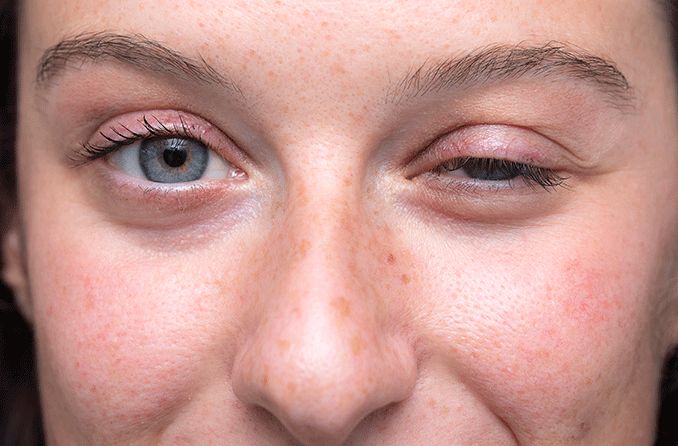When Sarah came to us, she was really worried and had no clue what was happening to her. Sarah, 32, was doing well at her job, enjoyed her yoga classes, and loved meeting friends.
Sarah’s Symptoms Begin
One day at work, she noticed her right eyelid drooping slightly. She dismissed it, thinking it was just fatigue from late nights. Over the next few weeks, Sarah started experiencing double vision.
Tasks like reading emails or driving became tough. Assuming it was eye strain, she visited her optometrist, who found nothing wrong and suggested seeing a neurologist.
Before she could book an appointment, more symptoms emerged. Chewing and swallowing food became difficult as her jaw tired quickly.
After yoga, she felt unusually weak, especially in her arms and legs. One morning, Sarah woke up feeling extremely weak. She could barely lift her arms to brush her hair, and her speech was slurred.
Panicked, she called her best friend, who took her to a family doctor. The doctor noticed symptoms of myasthenia gravis and referred her to Dr. Shashank Shah.
Diagnosis with Dr. Shashank Shah
Dr. Shashank Shah is a renowned specialist with extensive experience in treating complex conditions like myasthenia gravis.
Sarah underwent several tests, including blood tests, nerve conduction studies, and a CT scan of her chest. Dr. Shah confirmed she had myasthenia gravis (MG) and recommended surgery.
What is Myasthenia Gravis?
Myasthenia gravis (MG) is a chronic autoimmune neuromuscular disorder characterized by muscle weakness that varies in severity.
How It Works:
Autoimmune Response: The immune system produces antibodies that attack acetylcholine receptors at the neuromuscular junction, leading to muscle weakness.
Thymus Gland Abnormalities: The thymus gland may be enlarged or contain benign tumors in people with MG.
Genetic Factors: While not directly inherited, a genetic predisposition to autoimmune diseases can increase the risk.
Environmental Triggers: Infections and other factors may trigger MG in genetically predisposed individuals.
Symptoms of Myasthenia Gravis
Muscle Weakness: Worsens with activity and improves with rest, affecting voluntary muscles.
Ptosis and Diplopia: Drooping eyelids and double vision are often initial symptoms.
Facial and Throat Muscles: Difficulty with facial expressions, chewing, and swallowing.
Limb and Respiratory Muscles: In severe cases, affects breathing and limb movements.
Treatment Options for Myasthenia Gravis
Medications:
Anticholinesterase Agents: Improve neuromuscular transmission.
Immunosuppressants: Reduce harmful antibody production.
Surgical:
Thymectomy: Removal of the thymus gland in certain cases.
Other Therapies:
Plasmapheresis and IVIG: For severe cases to remove or neutralize antibodies.
Why Timely Medical Advice is Crucial
It’s important to understand symptoms and seek timely medical advice. If you experience similar symptoms, consult a healthcare professional to explore the best course of action.
Early diagnosis and treatment can significantly improve the quality of life for those with myasthenia gravis.
About Dr. Shashank Shah
Dr. Shashank Shah is one of the best weight loss and bariatric surgeons in India. He has performed over 10,000 bariatric procedures and is highly skilled in treating complex conditions like myasthenia gravis.
His expertise and compassionate care have helped many patients regain their health and confidence.
Sarah’s story highlights the importance of recognizing symptoms and seeking expert medical advice. If you or someone you know is experiencing similar issues, don’t wait.
Early intervention can make a significant difference.
To schedule an appointment with Dr. Shashank Shah and get the best care for myasthenia gravis, click here.


